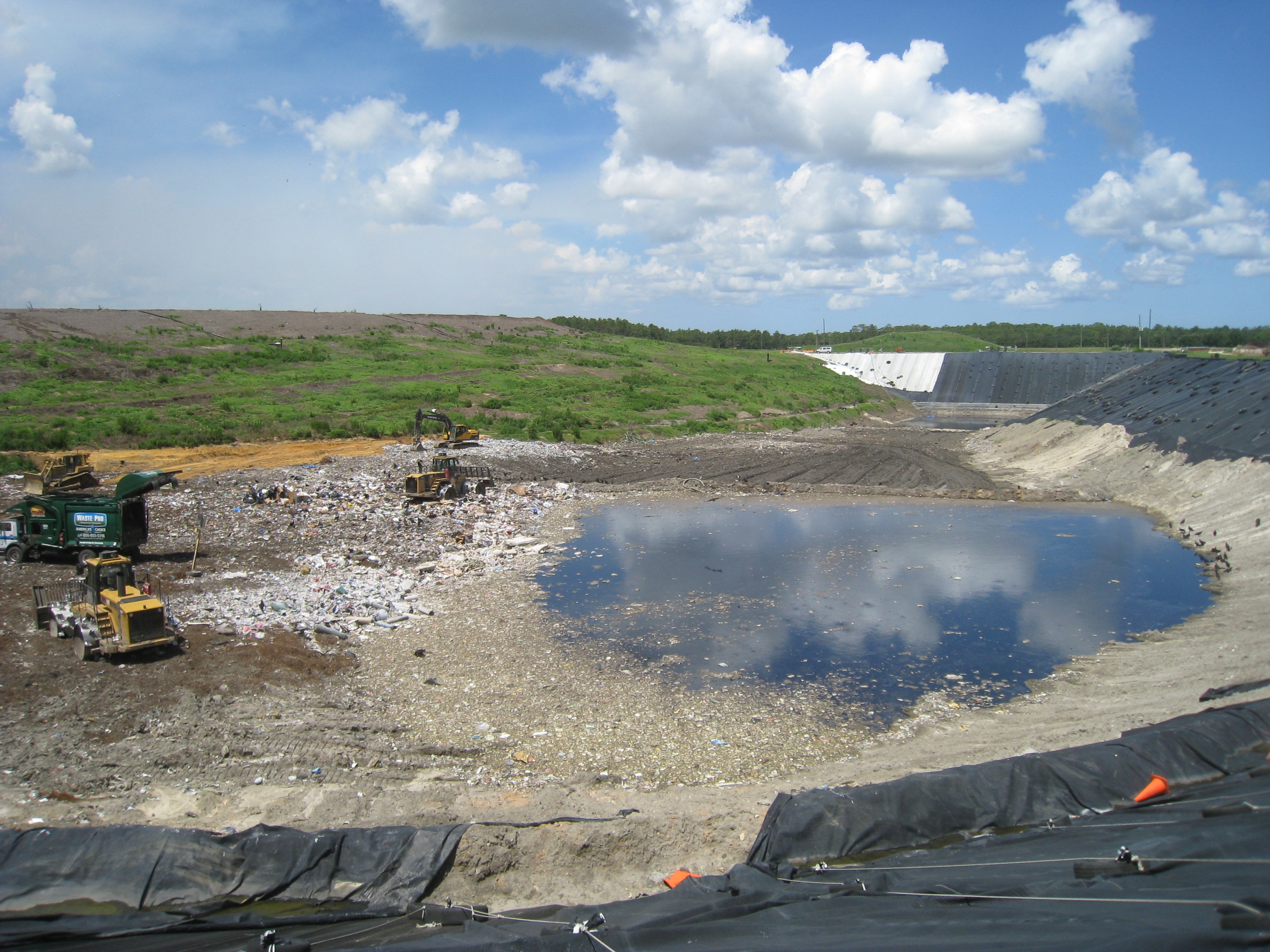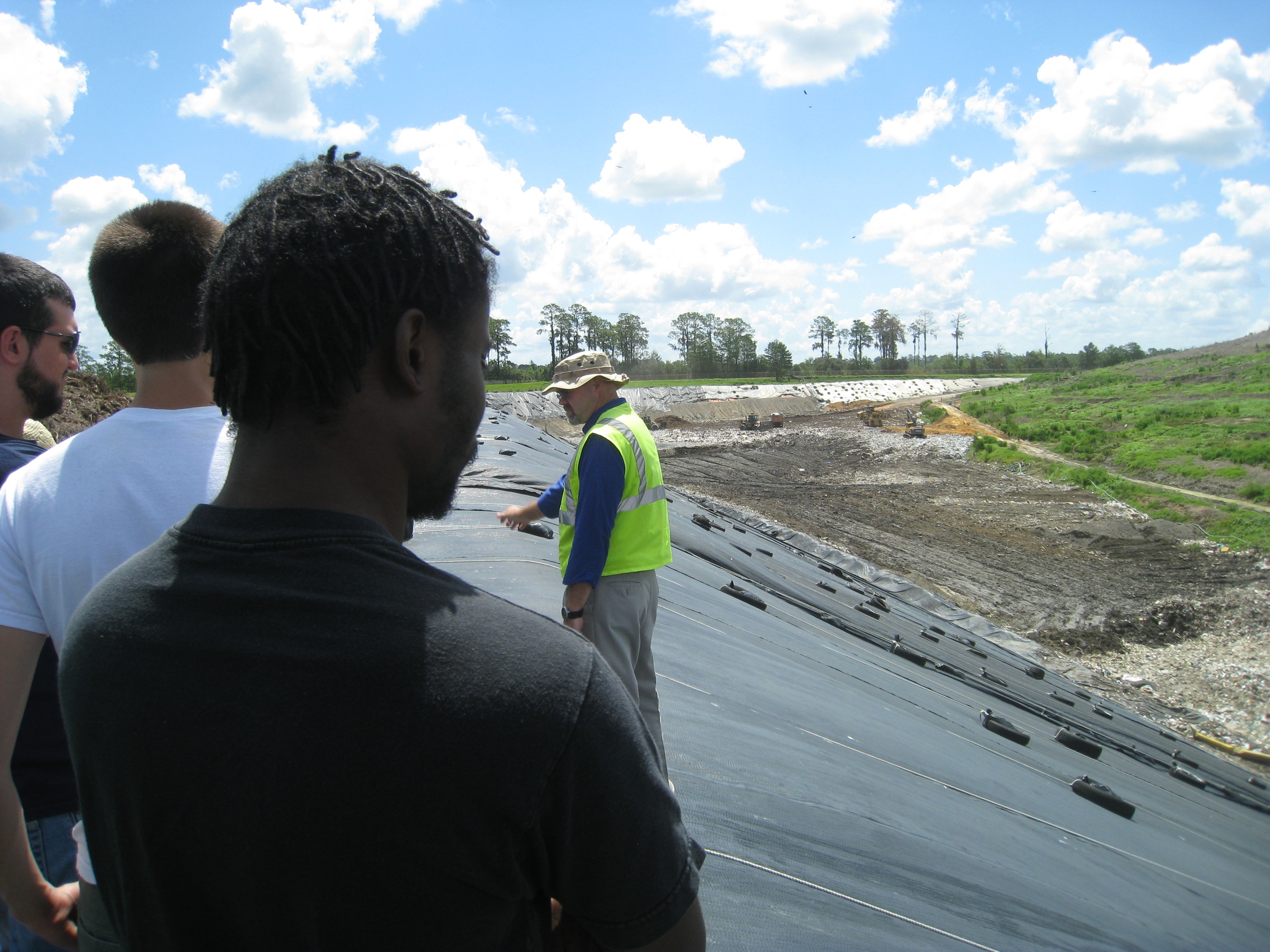Citrus County Landfill (Active Landfill)
June 18, 2012
Lecanto, FL
Author: Allison Kelly
Website

The Citrus County Landfill is located on 140 acres, surrounded on three sides by the Withlacoochee State Forest roughly 20 miles from Florida’s Gulf coast. Landfilling started at the site in the mid-1970s and continues to this day. The original cells of the landfill were unlined, but all new cells must be doubled-lined to meet environmental regulations. The landfill is predicted to reach maximum capacity by the year 2027 and by this time will reach 220 feet above sea level. The primary purpose of this field trip was to have BESS students experience an active landfill. It showed how much and how fast our garbage adds up, how primitive our current method for treating our garbage is, the impact the landfill has on our environment, and how much carbon and energy we are losing by just letting our waste sit.
Our tour started in the landfill’s water quality lab where we were shown leachate before and after the on-site treatment system. Landfill leachate is liquid that runs through or drains from a landfill. It may already exist or be created when rainwater mixes with the waste in the landfill. In many cases, such as in the case of this landfill, the leachate goes through a treatment process to remediate the water. However, when there is a lot of rain or in the past when the leachate was not treated, the leachate can leak into the environment, such as into our groundwater, and become harmful to humans and surrounding wildlife. There was a significant difference between the two containers we were shown; the leachate before treatment had a strong odor and was dark brown colored, while the container after had less of a smell and was light yellow in color.

Leachate from the landfill collects on the bottom liner and is pumped to large storage tanks. Leachate is then pumped from the storage tanks to the leachate treatment plant. At the on-site treatment facility, the leachate goes through a nitrification/de-nitrification process- similar to the UF campus wastewater treatment facility. The treatment process is even started by using wastewater biosolids (sludge)! In the first tank air is injected into the leachate to provide oxygen for ammonia-oxidizing bacteria. Ammonia nitrogen is converted into nitrates by vigorous aeration, then turned into gaseous di-nitrogen gas form under anoxic conditions and released into the atmosphere. In the de-nitrification step, a carbon food source (methanol) is added to promote de-nitrification of nitrate into di-nitrogen gas. In the reaction system a significant amount of activated carbon is added to aid in the remediation. The activated carbon and microbial biomass is separated from the liquid by the addition of a synthetic polymer, which coagulates the solids. The solids are collected off the bottom and wasted back into the landfill. After the solids are removed, the liquid is transferred into a pond for percolation back into the natural water cycle. Every batch takes about 12 to 14 hours and it is primarily designed to handle the ammonia nitrogen within the mixture. Before they finally dump the final product into a pond, they have to test for chemicals such as arsenic. Arsenic can only consist of 0.5 mg per liter or less before it can be discharged.
There is a section at this landfill for hazardous waste disposal. They try to keep hazardous wastes out of the landfill. Hazardous wastes include pesticides, oil based paints and many other chemicals. There is also a polystyrene recycling center where the company collects only clean and white Styrofoam. It then feeds the Styrofoam into a machine, melts it, and excretes hard, condensed pieces. This usually results in a 90 percent reduction of its volume. They send most of the polystyrene to companies that may be able to create new Styrofoam out of the pieces.

Currently the Citrus County landfill is working on creating phase 3 of their landfill. Phases one and two are full and have black pipes through them as a part of a gas collection system. The landfill is currently receiving carbon credits for “destroying” methane through flaring their collected landfill gas. The hope in the future is to be able to pump this gas to the jail adjacent to the landfill so it can possibly be used as a source of energy such as a way to heat water or provide electricity. Finding a way to harness this bioenergy that the landfill creates can be very important to us as a society in the future, especially as the cost of petroleum rises, our current energy sources continue to damage the environment, and we start to run out of many of our non renewable resources. Much of the landfill waste is made up of carbon, so we might as well use it as a source of energy rather than just leaving it in the ground to rot as waste.
As one can see, the Citrus County landfill is an example of an active landfill. They try to treat the leachate their landfill creates but the process is not completely efficient and there should be a better way of handling our waste or finding a better use for it. For instance, food waste and other carbon sources could be used as a source of energy to create biogas. This would help prevent many items from entering the landfill as well as turning a waste into something useful. The way we currently dispose of our waste is primitive and is taking up valuable land that our society could use in more productive or sustainable ways.